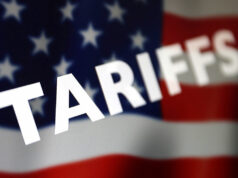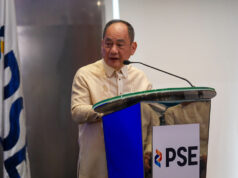Q4 boosts approved 2018 FDI pledges
By Christine Joyce S. Castañeda
Senior Researcher
THE GOVERNMENT approved more foreign direct investment (FDI) commitments in the country last year, fueled mostly by pledges in 2018’s last three months.
Approved commitments for 2018 grew 69.2% to P178.97 billion from P105.75 billion in 2017, which saw a 51.7% drop from 2016’s level.
Many of the commitments were approved in the fourth quarter: P91.17 billion, 321.2% more than the P21.65 billion seen in 2017’s comparable three months.
This was the biggest amount since the P125.69 billion recorded in the fourth quarter of 2016.
“The sharp increase in the value of foreign investment pledges may have to do with easing trend in inflation and interest rates that reduce borrowing costs of new investments,” said Michael L. Ricafort, economist at Rizal Commercial Banking Corp. (RCBC).
Last year saw inflation pick up for nine straight months, peaking at a nine-year-high 6.7% in September and October before easing to six percent in November and 5.1% in December. This brought the full-year 2018 average to 5.2% against the Bangko Sentral ng Pilipinas’ (BSP) 2-4% target range for 2018 and was the fastest since 2008’s 8.2%.
“Long-term interest rates have already eased by about two percentage points from the decade highs posted on Oct. 22, 2018, thereby encouraging more foreign investments with much lower borrowing financing costs, especially big-ticket/capital-intensive foreign investments that are financed by loans,” Mr. Ricafort said.
For Ruben Carlo O. Asuncion, chief economist at Union Bank of the Philippines, Inc. (UnionBank), the increase in investment pledges last quarter was a “good sign,” saying: “It somehow validates the economic growth story of the Philippines and that, in spite of the challenges of 2018, both internal and external, investors have signified their interest in the country.”
“However, it must be noted that these are pledges and may not become actual investments.”
Last year saw pledges from China grow more than 20 times to P50.69 billion from P2.33 billion in 2017. Chinese investments accounted for 28.3% of total pledges, followed by 11.8% from Singapore and 11% from Japan.
The government counts investment pledges from seven investment promotion agencies that include free port zones in Bataan, Clark, Cagayan, Subic, the Autonomous Region of Muslim Mindanao, as well as the Philippine Economic Zone Authority and the Board of Investments (BoI).
BoI contributed 58.1% of total FDI pledges last year at P103.97 billion, nearly five times the year-ago P21.74 billion.
Foreign direct investment commitments are different from actual capital inflows tracked by the Bangko Sentral ng Pilipinas (BSP) for balance of payments purposes.
Latest available BSP data showed FDI net inflows actually dropping 3.2% year-on-year to $9.06 billion in the 11 months to November, casting doubt on the central bank’s expectation of a fresh FDI banner year with a projected $10.4 billion.
In the fourth quarter alone, manufacturing continued to get the biggest portion of approved foreign pledges with P58.85 billion, accounting for 64.5% of the total. That period also saw investments in that sector surging 611%.
This was followed by electricity, gas, steam and air conditioning supply with investment commitments worth P13.34 billion or 14.6% of the total, as well as administrative and support service activities at P6.91 billion or 7.6%.
The bulk of FDI commitments in the fourth quarter — 52.1% of the total at P47.52 billion — will go to projects in Northern Mindanao, followed by Calabarzon (Cavite-Laguna-Batangas-Rizal-Quezon) at P20.32 billion or 22.3% and National Capital Region at P13.05 billion or 14.3%.
For UnionBank’s Mr. Asuncion: “This may be simply due to the current government’s push for the economic development of Mindanao.”
RCBC’s Mr. Ricafort gave the same assessment: “Northern Mindanao has been one of the fastest-growing regions in the country, as the country’s biggest businesses have aggressively expanded to fast-growing areas outside Metro Manila, with Northern Mindanao as one of the major gateways to Mindanao and also a major link (seaports) to the Visayas and Luzon as well.”
“It has also been a host for heavy industries such as steel manufacturing… [and] huge multinational companies for many decades, especially those in large agro-industrial ventures as Mindanao is one of the major sources of food/agriculture in the country,” Mr. Ricafort explained, adding that land and other costs of production are relatively lower in the region, therefore making it attractive for investors.
Meanwhile, combined investment pledges by both foreigners and Filipino nationals totaled P605.07 billion, more than double the year-ago P282.5 billion.
Should they materialize, foreign and local investments pledged in the fourth quarter were expected to generate 72,630 jobs across industries, more than double the 29,818 projected jobs a year ago.
Both economists expect the country’s approved investments to improve this year.
“Further improvement in the country’s infrastructure amid increased government spending on big-ticket infrastructure projects (Build Build Build Program) would also fundamentally help in attracting more foreign investments into the country,” said RCBC’s Mr. Ricafort.
For UnionBank’s Mr. Asuncion: “I expect that investments, whether pledges or actuals, to continually grow as internal challenges such as inflation come back to normal levels.”
“The external environment, though beyond the control of the current administration, I expect to be better, specifically global oil prices.”




